Abitibi Gold Belt: Canada’s primary source of gold
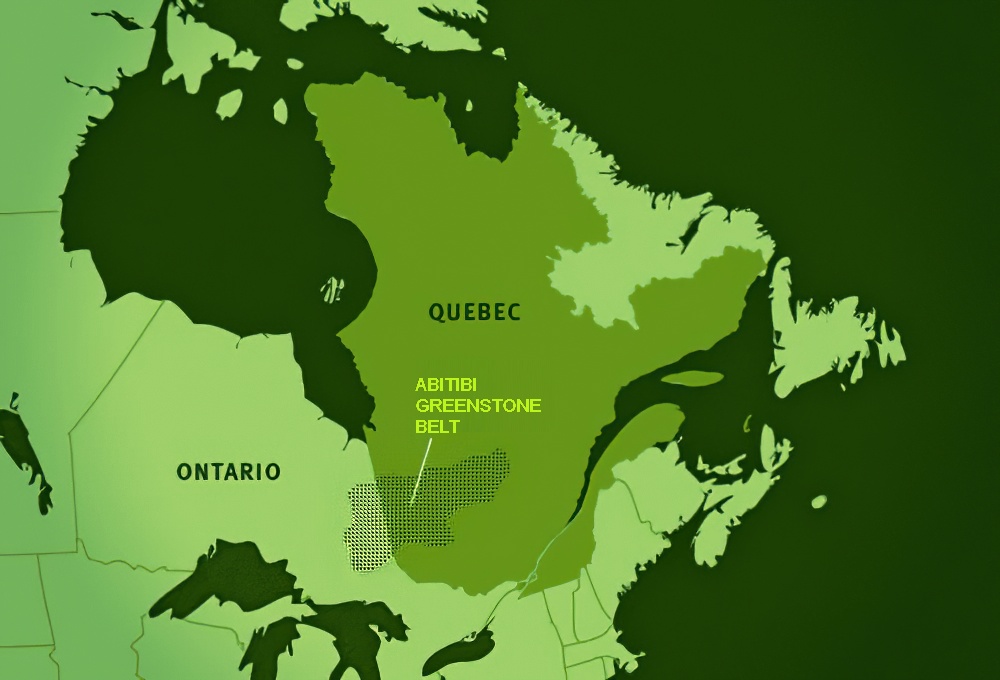
The Abitibi Gold Belt is a region extends from Wawa, Ontario in the west to past Val-d’Or, Quebec in the east. Located within the larger Abitibi greenstone belt, the Abitibi Gold Belt owes much of its huge gold endowment to quartz-carbonate, vein-style mineralization. The many gold deposits in the belt tend to be in clusters and define specific mining districts. In total, the Abitibi Gold Belt has produced over 190 million ounces of gold since 1901.
The most important concentration of gold deposits is along the Larder Lake-Cadillac and Destor-Porcupine fault zones. It is these two huge structures that acted as the main hydrothermal pathways for gold-bearing hydrothermal fluids. It has been calculated that the total gold content of the belt, including production, measured and indicated reserves and resources is more than 300 million ounces of gold, making it one of the world’s great regions prospective for gold.
The faults were created by shifts in the earth’s tectonic plates which enabled mineral-rich underground water to move closer to the surface of the earth’s crust to form gold-rich quartz veins around these faults.
The Abitibi greenstone belt features 21 gold deposits containing over 3 million ounces of gold in each deposit. During the last century, some 124 mines were placed into production. This includes Canada’s largest gold mine – the Agnico Eagle/Yamana Canadian Malartic gold mine. The Malartic gold mine is adjacent to the Renforth Resources exploration-stage Parbec Project and 12 km from O3 Mining’s Marban Project.
With robust sample assays and drill results continuing to be released, it is apparent that the Abitibi Gold Belt remains prospective for both higher-grade gold deposits at depth as well as lower grade, near surface, open pittable deposits.
Notably, within the extensive Abitibi Gold Belt is the emerging Chicobi Gold Belt where Kenorland Minerals and others are currently exploring.
 O3 Mining Inc. [OIII-TSXV; OIIIF-OTCQX], backed by Osisko Mining Inc. [OSK-TSX], benefits from the Osisko Group of companies’ acquisition, exploration and development. Since its launch in 2019, O3 Mining has assembled a number of 100%-owned highly prospective gold properties encompassing approximately 133,557 hectares in Quebec and 25,000 hectares in Ontario, two of which have reached the preliminary economic assessment stage. The company’s objective is to become a multi-million ounce, high growth gold producer.
O3 Mining Inc. [OIII-TSXV; OIIIF-OTCQX], backed by Osisko Mining Inc. [OSK-TSX], benefits from the Osisko Group of companies’ acquisition, exploration and development. Since its launch in 2019, O3 Mining has assembled a number of 100%-owned highly prospective gold properties encompassing approximately 133,557 hectares in Quebec and 25,000 hectares in Ontario, two of which have reached the preliminary economic assessment stage. The company’s objective is to become a multi-million ounce, high growth gold producer.
Through the consolidation of prime gold prospects, O3 Mining controls 66,000 hectares in the prolific Val-d’Or mining camp and over 50 km of strike length along the Cadillac-Larder Lake Fault, one of the key conduits for gold emplacement. O3 Mining also has assets in the Chibougamau region of Quebec.
A preliminary economic assessment (PEA) has been completed on the Marban Project near Val-d’Or where over 600,000 metres of drilling has been completed and a 45,000-metre resource expansion drilling program is underway. This project is 12 km from the Canadian Malartic open pit mine, Canada’s largest gold mine, and 8 km from the Kiena mine.
 The Marban PEA demonstrates the project’s potential to become a major North American gold producer with a positive after-tax IRR of 25.2% and an after-tax NPV of $423 million. The PEA envisages an 11,000 tonne-per-day open pit with a 15.2-year life-of-mine and robust economics at a gold price of US$1,450/oz, attractive cash costs and all-in-sustaining costs, and a low capital expenditure. The first 12 years sets production at over 130,000 oz gold annually, peaking at more than 161,000 oz in year nine. The initial capital expenditure would be $256 million, including mine pre-production and processing infrastructure. The company will begin a pre-feasibility study shortly to advance the project to the production stage.
The Marban PEA demonstrates the project’s potential to become a major North American gold producer with a positive after-tax IRR of 25.2% and an after-tax NPV of $423 million. The PEA envisages an 11,000 tonne-per-day open pit with a 15.2-year life-of-mine and robust economics at a gold price of US$1,450/oz, attractive cash costs and all-in-sustaining costs, and a low capital expenditure. The first 12 years sets production at over 130,000 oz gold annually, peaking at more than 161,000 oz in year nine. The initial capital expenditure would be $256 million, including mine pre-production and processing infrastructure. The company will begin a pre-feasibility study shortly to advance the project to the production stage.
The company has an option to acquire the nearby 1,400 tonne-per-day Aurbel Mill from QMX Gold for $5 million that could offer potential for “hub and spoke” development with several gold deposits in the region feeding ore to the centralized mill.
O3 Mining intends to put Marban into production on its own that would be followed by building other mines. With the Capex for Marban at $256 million, half could be raised on equity markets and the other half by way of a loan. It may be possible to use custom milling at a nearby operating mill that would result in $100 million less in Capex costs.
Marban is an integral part of the Malartic property where company geologists are of the view that there is high-grade gold potential at depth which is typical of other gold deposits along trend. The Marban Project is near infrastructure, including roads, rail, power, mills, an experienced local labour and technical services.
O3 Mining has planned a 100,000-metre “brownfield” expansion drilling program at its Alpha property along trend from Marban. O3 Mining considers this area as brownfield as it is more or less surrounded by various mining operations. To advance the property’s exploration potential, O3 Mining invested in artificial intelligence technology, which has identified 25 targets, including 10.4 g/t gold over 3.0 metres at the Simkar Zone on the Alpha property, confirmed in December 2020. With the Alpha property extending over 20 km east-west, this project represents a regional-scale opportunity. With many discrete gold deposits on the Alpha property, it is possible that potential open pits could be combined into a larger pit.
New assay results from one hole drilled in the western extension of the Simkar Zone include
413.0 g/t gold over 1.2 metres in hole O3AL-20-321. With these holes about 600 metres from the historical mine, it strongly suggests the presence of an important ore shoot in the down-plunge extension of the Simkar.
There are currently 12 drill rigs operating. With a total of 150,000 metres of drilling planned on its projects and, considering known geological data, the company is expecting to increase resource estimates which have already been taking place. Environmental baseline studies are commencing for the various projects.
O3 Mining is advancing toward its goal of building a 6.8-million ounce gold portfolio. To date, the company’s properties host resources totaling 4.3-million ounces grading 1.03 g/t gold in the Measured and Indicated categories and 2.5-million ounces grading 1.20 g/t gold in the Inferred category.
As with other companies in the Osisko Group, O3 Mining management has extensive experience. The company is headed by Jose Vizquerra, President and CEO. Outstanding shares total 60.3 million with Osisko Mining holding a 30.3% interest, management with 6.4% and institutional investors holding 22.0%. Cash and investments stand at C$60.8 million. The Val-d’Or gold region is a Tier 1 mining jurisdiction and, being in Quebec, there is the flow-through financing advantage for exploring the company’s outstanding portfolio of gold prospects.
 Renforth Resources Inc. [RFR-CSE; RFHRF-OTC; A2H9TN-FSE] is a Canadian junior resource company that is aiming to prove once again that the best place to find new mineral discoveries is in the vicinity of existing mines.
Renforth Resources Inc. [RFR-CSE; RFHRF-OTC; A2H9TN-FSE] is a Canadian junior resource company that is aiming to prove once again that the best place to find new mineral discoveries is in the vicinity of existing mines.
The Toronto-based company is testing that theory after assembling a portfolio of properties that are located in historic Canadian mining camps in Ontario and Quebec.
Renforth has $6.7 million in cash and securities on hand and full ownership of several properties, including the flagship Parbec property, a bulk tonnage gold project located in Malartic, Quebec, situated beside the Canadian Malartic open pit gold mine. Held jointly by Agnico Eagle Mines Ltd. [AEM-TSX, NYSE] and Yamana Gold Inc. [YRI-TSX; AUY-NYSE], the Canadian Malartic mine ranks as Canada’s largest gold mine.
Renforth President and CEO, Nicole Brewster, is focused on the development of the Parbec Project which has open pit NI 43-101 compliant resources.
According to a May, 2020 estimate, Parbec contains an Indicated Resource of 104,500 ounces of gold in 1.82 million tonnes at an average grade of 1.78 g/t gold, and an Inferred Resource of 177,300 ounces of gold in 3.12 million tonnes at an average grade of 1.77 g/t gold.
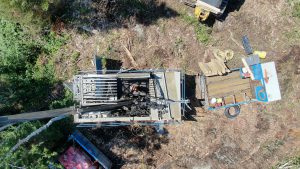 The company launched a 15,000-metre drill program in Fall 2020 with the aim of adding ounces to the May, 2020 estimate. With 9,600 metres of drilling completed in 2020 the program, which includes infill drilling within the modelled mineralized zones, on strike and down dip and step-outs down-dip to test Parbec’s depth potential, will re-commence soon.
The company launched a 15,000-metre drill program in Fall 2020 with the aim of adding ounces to the May, 2020 estimate. With 9,600 metres of drilling completed in 2020 the program, which includes infill drilling within the modelled mineralized zones, on strike and down dip and step-outs down-dip to test Parbec’s depth potential, will re-commence soon.
The latest drill results at Parbec include hole PAR-20-101 that returned 1.09 g/t gold over 13.2 metres (7.8-21 metres), including 1.65 g/t gold over 8 metres (9-17 metres). PAR-20-104a assayed 1.72 g/t gold over 13 metres, within the sediments south of the Cadillac Break, forming a new area of mineralization deserving future follow-up. Results have only been released for 5 of the Fall 2020 drill holes, each of which returned gold values, 22 holes remain to be received and reported on.
At a time when the prices of gold and copper are expected to rise, any success at the drill bit level would likely have a positive impact on the shares of Renforth, which were trading on January 15, 2021 at $0.05 in a 52-week range of $0.03 and $0.10, leaving the junior with a market cap of $12.7 million based on 255 million shares outstanding.
 Aside from Parbec, Renforth also holds the Malartic West, the site of a copper/silver discovery outlined on surface, with future exploration planned, and Surimeau properties, which are both contiguous to the Canadian Malartic Mine. Surimeau hosts polymetallic mineralization and represents the consolidation of four historic properties into one for the first time. A small, exploratory drill program testing a 20-km geological/geophysical anomaly at Surimeau demonstrated the presence of sub-surface VMS mineralization; assay results are pending for what Renforth considers a new VMS discovery.
Aside from Parbec, Renforth also holds the Malartic West, the site of a copper/silver discovery outlined on surface, with future exploration planned, and Surimeau properties, which are both contiguous to the Canadian Malartic Mine. Surimeau hosts polymetallic mineralization and represents the consolidation of four historic properties into one for the first time. A small, exploratory drill program testing a 20-km geological/geophysical anomaly at Surimeau demonstrated the presence of sub-surface VMS mineralization; assay results are pending for what Renforth considers a new VMS discovery.
In addition, Renforth has optioned the wholly-owned Denain-Pershing gold-bearing property, located near Louvicourt, Quebec, to O3 Mining Inc. [OIII-TSXV].
In Ontario, Renforth holds the Nixon-Bartleman property, which straddles the famous Destor-Porcupine Fault and hosts over 500 metres of exposed gold in quartz mineralization. Located west of Timmins, approximately 10km SW of, and on strike with the Timmins West and Bell Creek mines of Pan American Silver [PAAS-TSX, NASDAQ], the project has been the venue for significant historical work, but no previous attempts to calculate a resource.
Renforth Resources has $6.7 million in cash and securities to fund an additional ~6,000 metres of drilling at Parbec, to resume shortly, a Q2 resource estimate update at Parbec, and programs at each of Surimeau, Nixon-Bartleman and Malartic West.
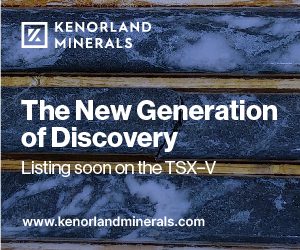 Last year was busy a time for Vancouver-based Kenorland Minerals Ltd. At the end of July 2020, the junior exploration company made a major grassroots gold discovery at the Regnault target on its Frotet Project in the Frotet-Evans greenstone belt of Quebec, 100 km north of Chibougamau.
Last year was busy a time for Vancouver-based Kenorland Minerals Ltd. At the end of July 2020, the junior exploration company made a major grassroots gold discovery at the Regnault target on its Frotet Project in the Frotet-Evans greenstone belt of Quebec, 100 km north of Chibougamau.
The discovery, made during an inaugural 15-hole drill program on the 37,480-hectare property, was “nothing short of amazing,” said Zach Flood, Kenorland’s President and CEO.
“We found a new and very significant gold system around five kilometres off the Route du Nord in Quebec, completely concealed under cover, through our systematic approach to grassroots exploration,” he said. “This discovery is in an area of the belt with no known mineral occurrences or historical drilling.”
Kenorland acquired Frotet through staking in 2017 and then optioned it to Sumitomo Metal Mining Canada [US-OTC:SMMYY]. Sumitomo holds a majority interest in the project and funded the discovery drill program, while Kenorland continues to be the project’s operator.
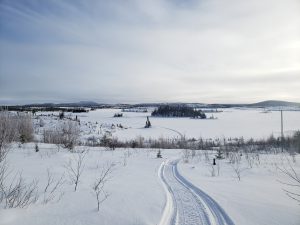 Since its founding by Flood and three former colleagues in 2016, Kenorland has focused on project generation and greenfields exploration in mining-friendly jurisdictions with large mineral endowments.
Since its founding by Flood and three former colleagues in 2016, Kenorland has focused on project generation and greenfields exploration in mining-friendly jurisdictions with large mineral endowments.
“Over the past four years, prior to going public, we had raised a total of $3 million through private placements and leveraged that into $15 million of partnered-funded exploration,” Flood said. “We’ve grown the company and advanced the portfolio in an organic and sustainable manner with minimal dilution to shareholders.”
The company, he continued, employs a scientific and risk-based approach to exploration, which, he said, is predicated on identifying and acquiring large, underexplored areas of geologically prospective terranes and screening these areas with large-scale geochemical and geophysical surveys. Kenorland currently controls over 400,000 hectares of mineral rights.
In 2017, Kenorland also acquired a 100% interest in the Taurus copper-gold-molybdenum project in eastern Alaska. Between 2017 and 2019, the company completed regional soil sampling programs, an airborne ZTEM and magnetic survey covering the entire 45,900-hectare property, and 9,000 metres of drilling that was funded by Freeport McMoRan [NYSE:FCX].
“The project currently hosts a number of known of porphyry related systems and over 30 km2 of related hydrothermal alteration,” Flood said. “This is a very large footprint and we suspect there are other porphyry centres which have not been discovered. The regional geochemical and geophysical surveys we completed identified a few significant anomalies which we plan to advance and drill test in 2021.”
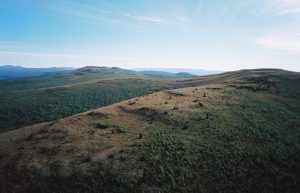 The mineralized porphyry systems at the Tanacross Project, he noted, are the same geological age and setting as Western Copper and Gold’s [TSX:WRN; NYSE:WRN] Casino copper-gold-molybdenum-silver deposit in the Yukon, about 180 km southeast of Tanacross, and is the one of the largest copper-gold projects in Canada.
The mineralized porphyry systems at the Tanacross Project, he noted, are the same geological age and setting as Western Copper and Gold’s [TSX:WRN; NYSE:WRN] Casino copper-gold-molybdenum-silver deposit in the Yukon, about 180 km southeast of Tanacross, and is the one of the largest copper-gold projects in Canada.
Kenorland’s recently completed reverse takeover with Northway Resources Corp. brought the Healy Project into the company’s portfolio of exploration assets. The 18,470-hectare discovery-stage property was optioned from Newmont [TSX:NGT; NYSE:NEM]) and lies about 45 km southeast of the Northern Star Resources [ASX:NST] Pogo mine, which had produced 3.9 million oz. of gold by 2019.
Newmont had initially identified and staked Healy after numerous years of systematic reconnaissance exploration, including regional stream sampling, in eastern Alaska. Follow up ridge and spur and wide-spaced soil sampling led to the identification of a previously unknown gold system, which was expressed as multiple significant gold-in-soil anomalies in an area with no recorded mineral occurrences.
In 2019, Northway completed an initial 10-hole, reconnaissance style, reverse circulation drill program on Healy, confirming the presence of a significant gold system. Follow-up geochemical and geophysical surveys in summer 2020 defined multiple drill-ready targets that Kenorland plans to test in 2021.
“Following completion of the transaction with Northway, we now have around $9.5 million in the treasury,” Flood said. “We will be fully funded going into 2021 and plan to spend up to $7 million on sole-funded exploration while also managing over $4.5 million of partner-funded exploration.”
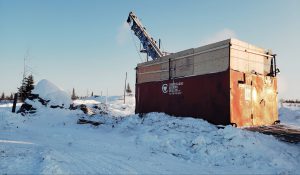 The majority of the overall exploration budget, he continued, is primarily focussed on advancing our Frotet, Tanacross, and Healy projects.
The majority of the overall exploration budget, he continued, is primarily focussed on advancing our Frotet, Tanacross, and Healy projects.
In addition to its three flagship assets, the company also has a pipeline of greenfield exploration projects, including the 161,025-hectare Chebistuan Project, located in the northern Abitibi, which is optioned to Newmont, the 51,257-hectare Chicobi Project, located in the central Abitibi, which is optioned to Sumitomo, and the Hunter and O’Sullivan projects, both 100%-owned by Kenorland and also located in the Abitibi greenstone belt of Quebec.
